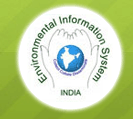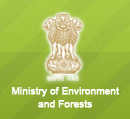Common property resources (CPRs)
Resources accessible to and collectively owned\held\managed by an identifiable community and on which no individual has exclusive property rights are called common property resources. Terms like “accessible”, “collectively owned/held/managed”, “identifiable community” and “exclusive property rights” are explained briefly below:
Common village land or ‘commons’:
These categories of CPRs refer to common property land resources within the boundary of the village and were formally (i.e. by legal sanction or official assignment) held by village panchayat or community of the village.
Government forest:
By legal status, forests in India are classified into following three categories, viz. reserved forest, Protected forest, and unclassified forests. Forestland also includes all state owned area of land classed as forest under any legal enactment or administered as forest, whether or not actually under forest. However, area of land under social and farm forestry, village forests, Van Panchayat forests and forests owned by individual households are excluded. The category of forests so formed is referred to as Government forests in this report.
Common water resources:
Typically, an Indian village uses a number of water sources, usually of different types, to meet their needs. Besides meeting needs for domestic purposes, such as drinking, bathing, washing etc., these sources provide for irrigation, feeding and washing of livestock, fishing and needs of other household enterprises. Many of the water sources used by villagers are owned by individual households. But in most of the villages, there are some sources, which are meant for community use. These are either held by the village community as a whole or a caste/religion/occupation-based community or a community based on traditional social order or community of persons of a geographical location. There are also sources of water, which are either constructed by or lie within jurisdiction of a government department. All these sources, whether or not controlled by a community or a local body, which are not held by individual households, have been treated as common water resources.
Community management of water resources:
Management of water resources by a local body, whether formal or informal, has been referred to as community management of common water sources. Apart from local self-government (like panchayat) and formal local organisations (like co-operative, pani panchayat, sinchai samitis and other farmers associations), totally informal but functionally effective local-level organisations for managing common water resources are commonly found in a large number of villages. All such informal bodies in addition to the formal bodies as forming part of community management were also considered for this survey.
Availability of Common Property land resources in rural India:
| Item |
Estimate |
| 1. Percentage of common property resources in total geographical area |
15 |
| 2. Common property land resources per household (ha) |
0.31 |
| 3. Average household size |
5.04 |
| 4. Common property land resources per capita (ha) |
0.06 |
5. Components of common property land resources: (Percentage)
- Community pastures and grazing grounds
- Village forests and woodlots
- Other
|
23(3.45%)
16(2.40%)
61(9.15%) |
Use of Common Property resources:
Item |
Estimate |
1. Households reporting collection of any material from CPRs |
48% |
2. Average value of annual collections per household |
Rs 693 |
3. Ratio of average value of collection to average value of consumption expenditure |
3.02 % |
4. Households reporting grazing of livestock on CPRs |
20% |
- Households reporting use of common water resources for
|
23%
30%
2.8% |
Percentage distribution of value of collections from CPRs by category of materials:
Agro-climatic zone |
Percentage distribution of value of collections |
Average value of collections (Rs) |
Fuel wood |
Fodder |
Other |
All |
Western Himalayas (WHm) |
59 |
39 |
2 |
100 |
1,939 |
East Himalayas & Bramhaputra Valley (EHm) |
53 |
8 |
39 |
100 |
1,219 |
Lower Gangetic Plains (LG) |
48 |
5 |
47 |
100 |
408 |
Middle Gangetic Plains (MG) |
52 |
39 |
9 |
100 |
464 |
Trans-Gangetic Plains (TG) |
44 |
51 |
6 |
100 |
528 |
Upper Gangetic Plains (UG) |
31 |
69 |
0 |
100 |
1,070 |
Eastern Plateau & Hills (EHg) |
64 |
4 |
31 |
100 |
845 |
Central Plateau & Hills (CHg) |
62 |
18 |
20 |
100 |
744 |
Western Plateau & Hills (WHg) |
68 |
25 |
7 |
100 |
674 |
Southern Plateau & Hills (DP) |
72 |
18 |
10 |
100 |
628 |
East Coast Plains & Hills (EG) |
65 |
18 |
17 |
100 |
559 |
West Coast Plains & Hills (WC) |
49 |
13 |
38 |
100 |
715 |
Gujarat Coast Plains & Hills (GC) |
61 |
30 |
9 |
100 |
658 |
Western dry region (TD) |
71 |
29 |
0 |
100 |
230 |
All Islands (Isl) |
79 |
3 |
18 |
100 |
467 |
India |
58 |
25 |
17 |
100 |
693 |
Source: NSS Report No. 452(54/31/4), 1998 |





